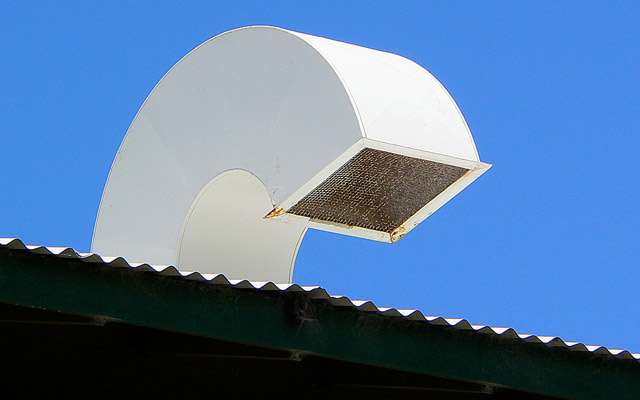
Roof ventilation systems server two main purposes: keeping the home cool during hot months and warm during cool months. Right now any central Texan and any roofer in College Station can tell you exactly how hot it is outside. Proper ventilation helps to keep your entire home cooler because it moves warm to the outside of the home. Air is usually vented from the outside near the roof edge, in the section that overhangs the home. Air travels through the vent and upward towards the top of the roof as it warms through diffusion. Air is then released through the roof ridge.
In order to accomplish proper roof ventilation several, there are 5 key steps that should be followed.
Step 1: Seal attic floor
The attic floor is essentially your ceiling. Any leaks or holes should be identified and sealed properly, prior to installing insulation. Leaks here are a major contributor to increased utility bills. Also, be sure to check any openings in the attic floor, like those for lights and ceiling fans. Make sure the opening is completely sealed around whatever fixture may be attached.
Step 2: Add Insulation
Insulation should be added in bulk to the roofing system. It should be placed above the top plate and packed in densely. Common types of insulation used in this system are cellulose and fiberglass insulation. Particular attention should be paid to the R-value of the walls in the home. R-value is the measure of thermal resistance of a given material. The insulation used above the top plate should be equal to or greater in R-value than that of the walls.
Step 3: Vent Soffit
The vent in the soffit is the vent in which the cool air enters the home through the roof overhang. The vent should be located as far away from the walls as possible. This will prevent heat built up from inside the home from warming the cool air that should be entering the home. During winter months the trapped warm air can prematurely warm snow, melting it. When it refreezes later, ice dams are formed.
Step 4: Give Enough Airspace
The international resident code requires at least one inch of airspace between the roof sheathing and the actual insulation. Many professional roofers see better results with more space added to allow greater airflow.
Step 5: Pressurize Attic
Optimal pressurization is key to a quality ventilation system. A roof should be pressurized to help move air faster through the home. As cooler air passes over the warm air trapped in the attic, it is warmed through diffusion and is passed out through the vent in the roof ridge. A depressurized roof will force air cooled by the HVAC system to be sucked out of ventilation system and into the attic, away from its intended destination.
If you find that your utility bills continue to rise each month and you have already eliminated any leaks in your roofing system, then you should make sure that your roof ventilation system follows these basic guidelines and is not compromised in any way. If you can feel air passing through any cracks, you can consider that money lost. To help you identify ventilation issues contact Schulte Roofing, a roofing contractor in College Station, TX with over 100 years of combined roofing experience.
